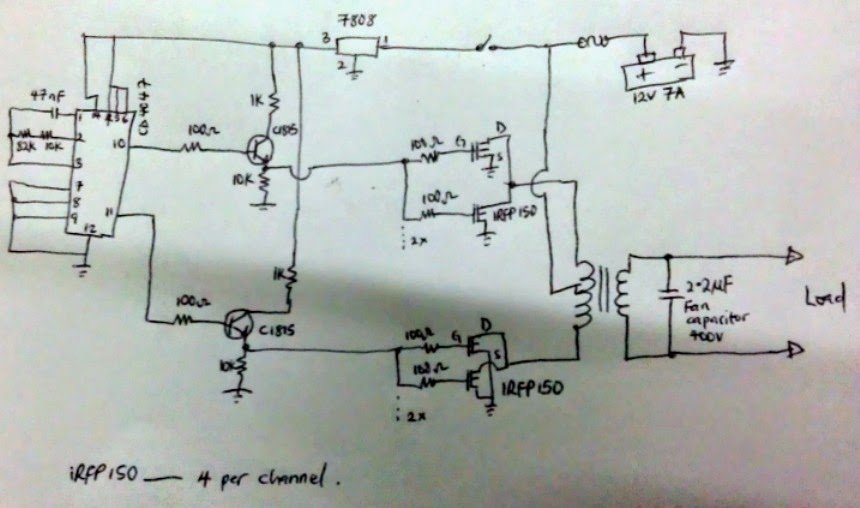The submit offers a explanation concerning the troubleshooting of a 4047 IC based inverter output voltage drop situation on hooking up a load.

The battery AH is far too inadequate for managing a 200 watt load. To be able to attain 200 watts of power without reducing the output voltage, the very least 40 AH could well be needed from the battery.
The FEts are carrying out properly and fully, the 2.5V is approximately the 50% of the supply considering that the outputs are switching at 50% duty cycle, the peak voltage might be close to the supply DC of the IC.
The 8V regulator shouldn't be taken away as it's existence is not going to damage the circuit in in any case, it may be restored with a 9V for a better reply, although.
The transformer primary needs to be graded at somewhat less than the battery voltage for maximum efficiency, for instance with 12V battery it might be a 9-0-9V rated. This may make sure a standard output voltage within the essential range at the same time the battery voltage falls to a pretty lower level.
Considering that the IC4047 is stipulated to work with higher voltages than 12V, it is not going to influence its efficiency even though no regulator is utilized, but a regulator is actually appropriate for better safety. Amp of the battery turns into irrelevant provided that the IC highest voltage rating is not surpassed.
Leave a Reply